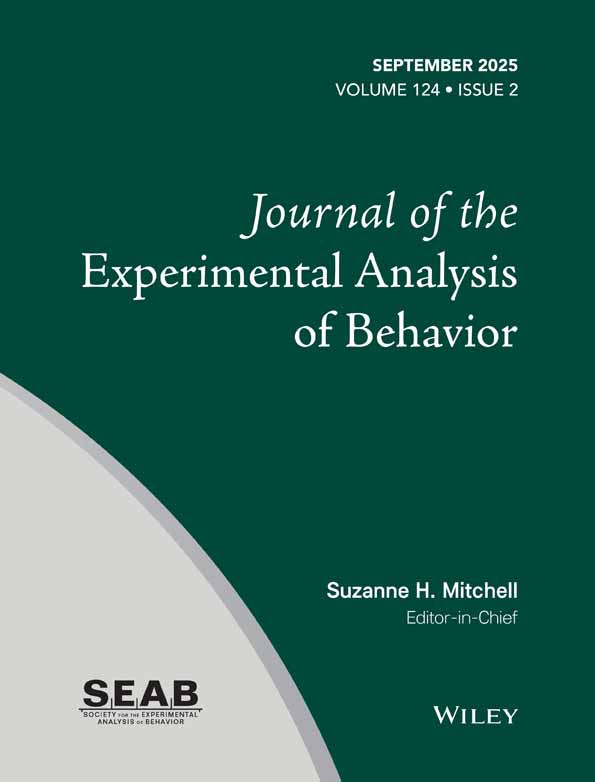ALTERING THE PROPORTION OF COMPONENTS IN A MIXED FIXED-RATIO SCHEDULE1
This research was supported by NASA Grant NGR 45-002-022. Portions of the study were presented at an informal session of Division 25, American Psychological Association, Miami, 1970.
Abstract
Pigeons were trained under a schedule consisting of a number of fixed-ratio 100 components followed by a single fixed-ratio 10 component. The proportion of fixed-ratio 100 to fixed-ratio 10 components was varied according to several ascending and descending series within the range of 99:1 to 1:1. When this proportion was reduced to about 20:1 and below, the pause following each fixed-ratio 100 gradually decreased in length. Primes, a burst of responses at the start of the fixed-ratio 100 component, increased in frequency, and then decreased when the proportion became extremely low. Also, when the relative frequency of fixed-ratio 10 components was very high, primes were seldom observed in the first fixed-ratio 100 component following a fixed-ratio 10 component, but were distributed evenly throughout the remaining fixed-ratio 100 components.




